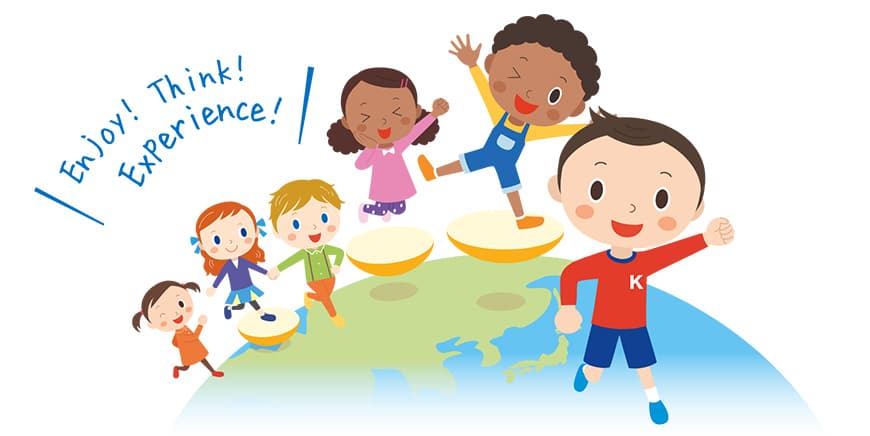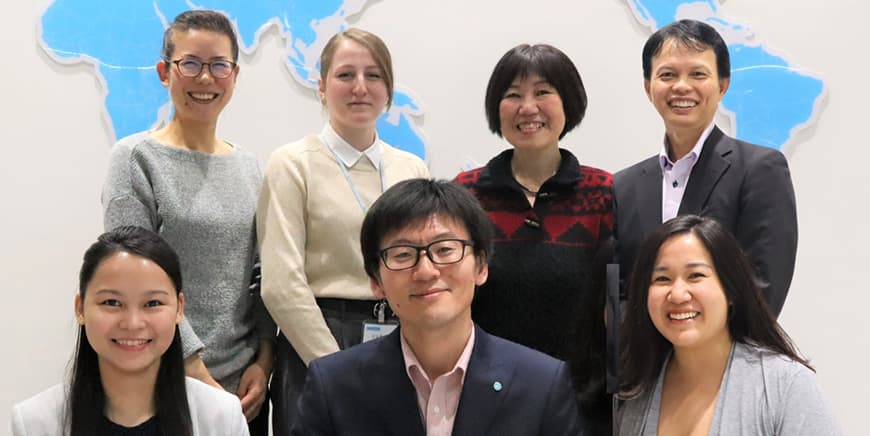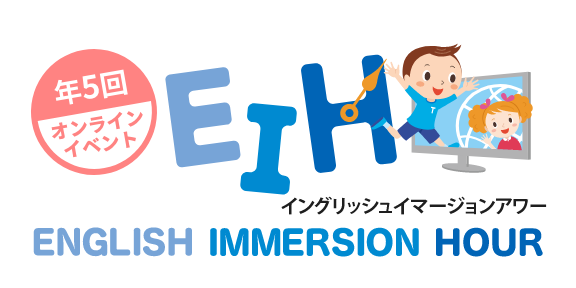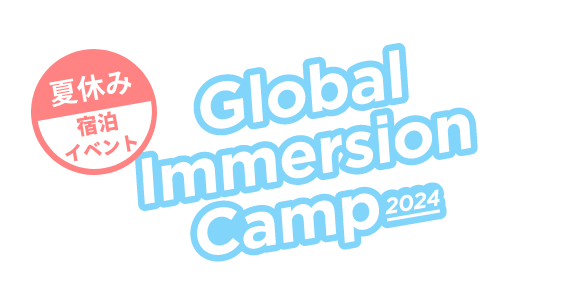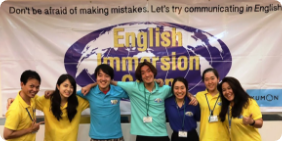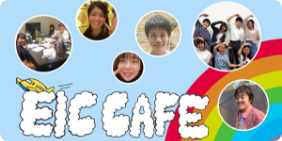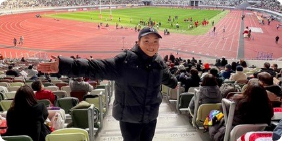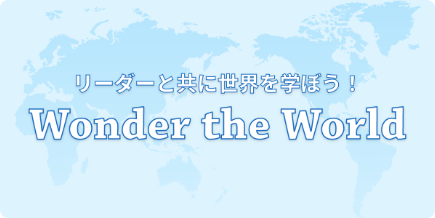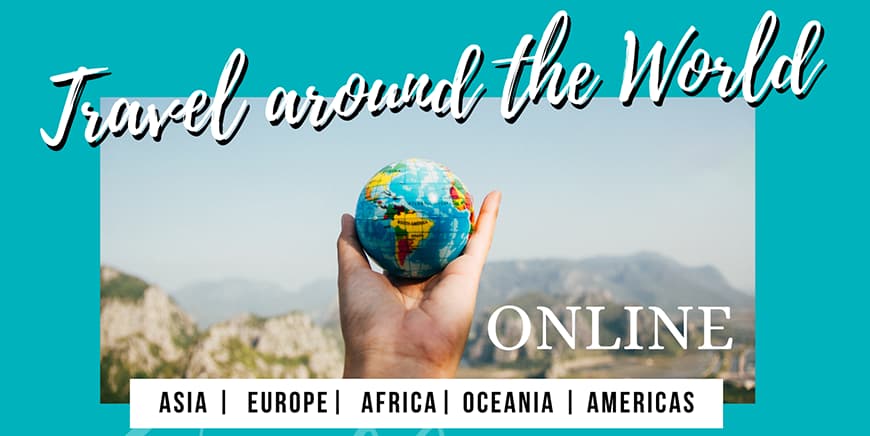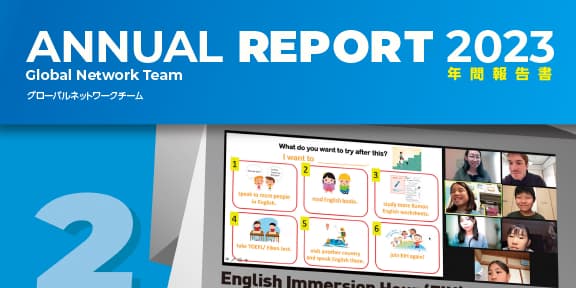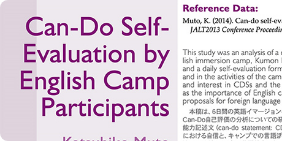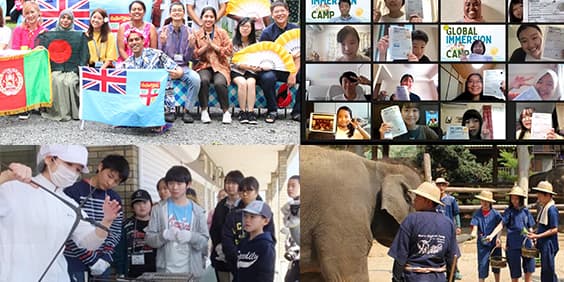Report
1st Global Network Initiatives (GNI) Report
Global Network Initiatives (GNI) is an event where past EIC participants, Camp Leaders, and staff gather once a year. The first event was simultaneously held on Sunday, March 24, 2019 at venues in Osaka and Tokyo. A total of about 150 people attended the events, which were held at the Kumon headquarters in Shin-Osaka and the Ritsumeikan Tokyo Campus in Tokyo. The program ran from 10:30 AM to 5 PM. YouTube live streaming was also available for those who could not join us in person. The participants, especially children, learned about current events from a global perspective. Therefore, GNI served as a place for children to think about their own goals and to aim for new challenges.

This year’s theme: Take the Initiative and Give it a Try! The objective was to think as an individual from a global point of view in order to implement this theme by learning about the Sustainable Development Goals (SDGs) for the period 2015 to 2030 which were adopted at a UN Summit. The 2030 Agenda lists 17 SDG goals and 169 targets for achieving a sustainable world and leaving no one on earth behind. First of all, while playing a card game about SDGs, we challenged students to think about the questions, “Why are SDGs necessary for our world?” and “What are the possibilities with SDGs?”
After lunch, participants were divided into groups based on the preferred theme of interest and discussed their impressions of the game in the morning while thinking about what actions can be taken from now and what is necessary in order to do so. After that, we deepened our learning by listening to presentations about SDGs from Mr. Mizan Bisri, a former EIC Camp Leader, and Mr. Philip Vaughter who are both professors at the United Nations University (UNU) in Tokyo. In addition, since GNI was held for the first time, a logo competition was held. The logo represents the idea of GNI and was designed by many members. After voting on the website and at the event, the logo was selected on the day of the event.

Event Information
- Date: March 24, 2019 (Sunday)
- Location: Osaka Venue- Kumon Institute of Education Headquarters, Tokyo Venue- Ritsumeikan Tokyo Campus
- Participants: 156 Participants (111 children, 32 Camp Leaders [Tokyo 12 and Osaka 20], and 13 Staff)

Osaka Venue 
Tokyo Venue
① Experience SDGs through the 2030 SDGs Game
This game is an experiential simulation game of what could happen in our world in 2030. The main aim of the game is for participants to run projects in order to achieve their goals. The goal cards represent different things we cherish in life, for example leisure time and money. When you run a project, you will also have an effect on the world. The situation of the world is created by all of the participants. The impact will be on the economy, the environment, and society. The purpose was not only to run a project but also to learn the importance of always being aware of the balance of how to influence and change the situation in the world. There were 10 groups in Osaka and eight groups in Tokyo conducting projects in their own groups with their fellow participants and facilitator leaders. They carried out negotiations in English with other group members to make it happen.
Participant comments
By thinking about world problems in the game, I was able to think about problems in an easy-to-understand manner.
I realised that the way I live my life can impact the future.
By learning about SDGs for the first time, I feel that I have clearly understood what I will do from now on. First of all, I will try to find out what I can do.
② Group Work
In the morning, everyone was divided into different groups and shared with the each other what they felt and had learned in the 2030 SDGs game. We also discussed what actions we can take from now on.
At the end of the group work, we shared ideas about what we could do to achieve our goals. Having such a place to make international connections and exchange ideas will continue to be an opportunity for all participants to share their thoughts and to learn from each other.
Participant Comments
I felt that the circle of my network expanded a little. It now includes not only people of the same grade but also people who participated in the past.
I learned about how SDGs can impact the world from now on. It was good to be able to talk with everyone on a very global topic.
I spoke English, and I felt that with English I can learn so many things about the world.
③ Keynote Presentation
After completing the above program, we listened to more concrete examples from two people involved with SDGs on a daily basis who were invited as special guests from the United Nations University (UNU) to Osaka and Tokyo respectively. Participants were able to learn what each goal is focused on and how we can take action to contribute to each goal.
【Osaka Venue】

Mr. Mizan Bisri: (PhD and JSPS-UNU Postdoctoral Fellow Education for Sustainable Development Programme at the United Nations University Institute for the Advanced Study of Sustainability (UNU-IAS)/EIC 2012, 2013, and 2015 Camp Leader from Indonesia)
Major: Children and youth taking action in disaster management for Sustainable Development Goals
Presentation based on the case that he worked on after the disaster in his home country of Indonesia.

【Tokyo Venue】
Prof. (Dr.) Philip Vaughter: (UNU Research Fellow, Education for Sustainable Development Programme at the United Nations University Institute for the Advanced Study of Sustainability (UNU-IAS))
Sustainable Development and the United Nations: Presentation about the 17 SDG goals and targets

Participant Comments
What Professor Vaughter was saying was a little difficult to understand but it was very rewarding.
In the speech of Professor Vaughter I understood what I could do to achieve the goal.
It was good to hear the story of Mizan who is actually taking action.
④ Overseas Study Tour (OST)
Thirty members left for a study tour to Indonesia from March 25, the day after the event. At the event they gave presentations about the activities they plan to do during the trip. They introduced their plans with enthusiasm and showed great curiosity. The presentation was broadcast over the internet to the Tokyo venue and the Osaka venue.

From Tokyo 
From Osaka
⑤ GNI Logo Result
Since this is the very first GNI, we asked members who were interested to design logos to represent the meaning of GNI. From 13 designs, the top six were voted for and, finally, the winner was announced at the GNI Event (on March 24, 2019).

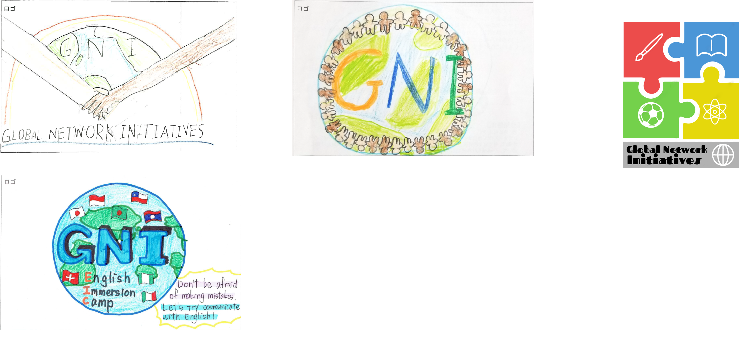
The winner is this logo, designed by Yuri Sekimori (2018 Participant).
Here is her design:
Logo ⑬
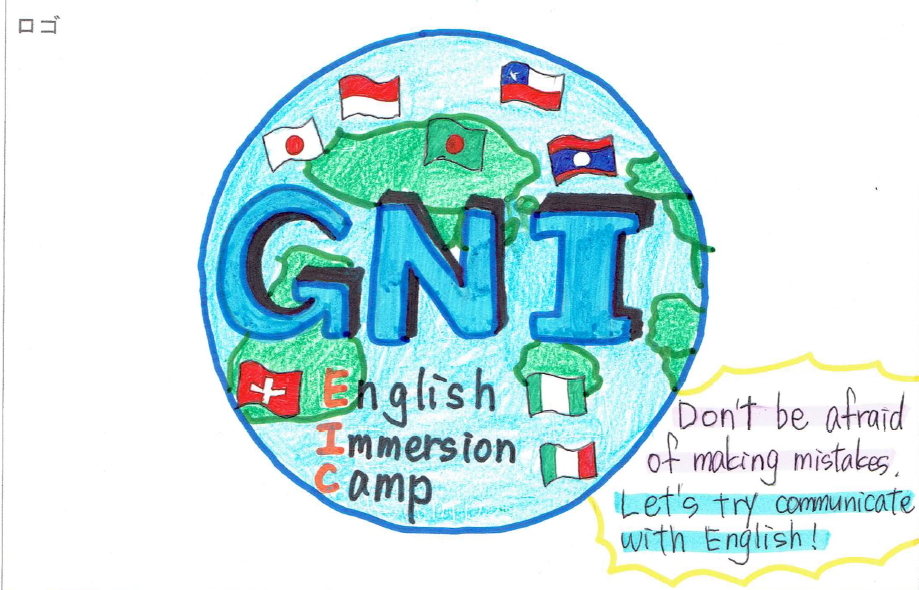
Meaning explanation: To emphasize the meaning of [GNI]], I chose to mainly express [a connecting world]. |
Looking towards the future
The first GNI was held successfully. The GNI is a platform for participants who will take on challenges daily and in global society. The events held by the Global Network Team aim to establish GNI as a forum where we can see and support individual growth through learning and exchanging ideas in order to discover our next challenges and goals and to continue to try to understand the world. Through the expansion of perspectives, discussions, encounters, and connections we will all grow and develop our individual abilities and actively work on new projects as we move into the future within the international community. We hope to be a presence that will continue to support the EIC Family!
Related Articles
What’s GNI?
Global Network Initiatives (GNI) Report (Japanese)
If you like this article, click the heart button!
Previous reports
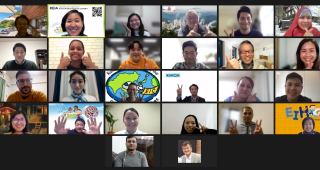
4th Global Network Initiatives (GNI) Report
The 4th Global Network Initiatives (GNI) was another delightful event held on Saturday 21st Fe...
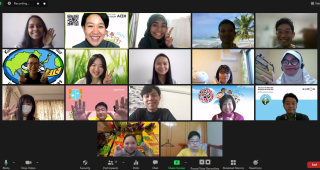
3rd Global Network Initiatives (GNI) Report
Our 3rd Global Network Initiatives (GNI) Online Event was successfully carried out on Sunday, ...

2nd Global Network Initiatives (GNI) Report
Please have a look at the below Digest Video to hear what we talked about in GNI SOS...


